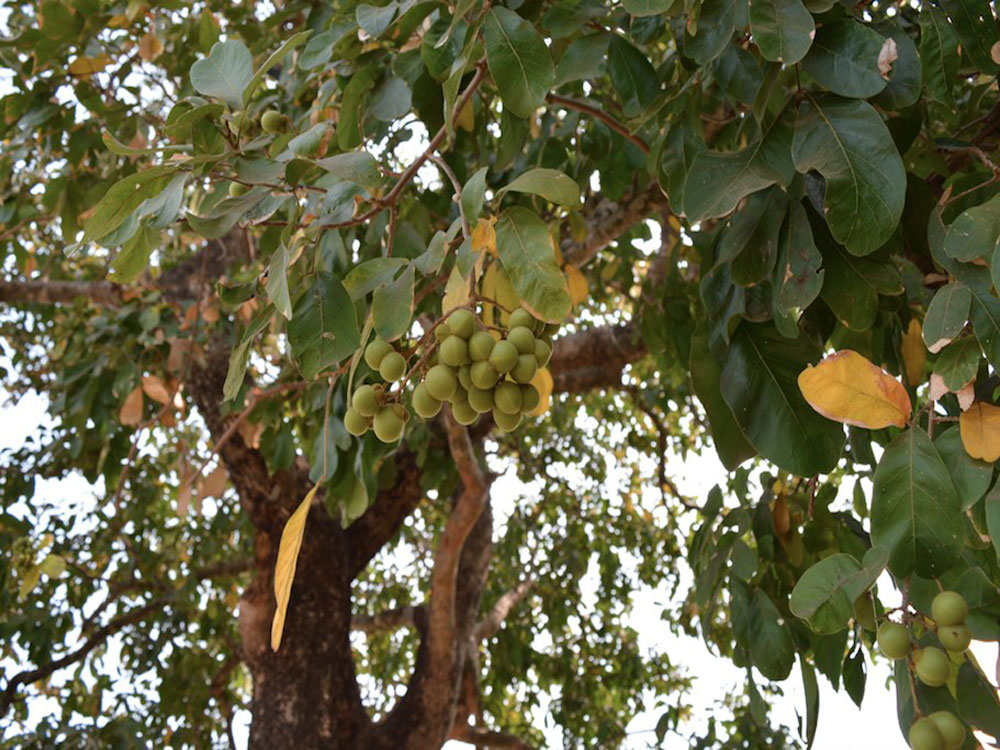Reetha - Soapnut Tree

Sapindus trifoliatus
Summary
Scientific Classification
Kingdom: Plantae
Division: Angiosperm
Class: Dicotyledonae
Order: Sapindales
Family: Sapindaceae
Genus: Sapindus
Species: S.trifoliatus
Scientific Name: Sapindus trifoliatus L.
Common Names:
English: Soapnut tree.
Hindi: Reetha.
Kannada: Kookatakayi, Kudale-kaye, Kukate-kayi.
Marathi: Ritha.
Description:
- Habit & habitat: A tree, dry deciduous forests and margins of grasslands.
- Distribution: State - Kerala, District/s: Palakkad, Idukki, And Malappuram.
- Morphology:
Leaf compound, 15-30 cm long. Leaflets are nearly stalkless, 2-3 pairs, 8-18 cm long, 5-7.5 cm broad, elliptic-lanceshaped, Smooth, pointed tipped, base slightly oblique, terminal pair longest.
Inflorescence: In terminal and Axillary panicles.
Flower: Flowers are greenish-white, in terminal, slightly velvety panicles. Flower stalks are 3 mm long, velvety. Sepals are 5, slightly fused at the base, 4-5 mm long, ovate-oblong, velvety. Petals are 5, free, 5-6 mm long, lance-shaped to ovate, clawed, bristly. Disc is 5-lobed.
Androecium: Stamens are 8, free, filaments 2-3 mm long.
Gynoecium: Ovary is 3-locular, 3-lobed, ovoid, about 3 mm long, velvety, with 1 ovule in each locule.
Fruit: Fruit is 2-3 lobed, 1.3-2 cm long, velvety when young, hard and smooth when mature. Each cell has a 6-9 mm black, round seed, which is popular as a traditional washing soap.
Flowering and fruiting: November-March.
Seed: seeds black, globose, smooth. - Propagation: Seed and Greenwood cuttings.
- Importance:
Fruits are used as a substitute for soap, especially for washing clothes. Root-bark and fruit given internally as emetic, tonic, anthelmintic, alexipharmic, purgative, nauseant and as errhine, used in epilepsy, asthma, hysteria and hemicrania; Fruit is used in leprosy, pruritus, boils and as abortifacient. - Location: Main Enterance Garden, Sports Ground.
 Trees of GSS Project supported by Makerspace Belgaum Website concept and designe by
Trees of GSS Project supported by Makerspace Belgaum Website concept and designe by